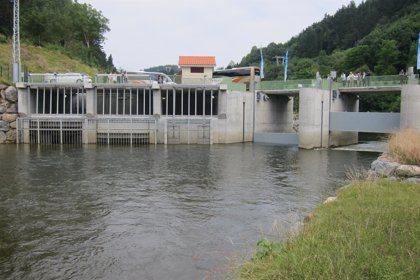Contenidos
Consorcio de aguas del gran bilbao
edp energia
Depending on the management you want to carry out with the Consorcio de Aguas Bilbao Bizkaia, you will have to go to a different place, but most of them will be carried out at the headquarters in the Albia Building in Bilbao. The different floors that the building has will be used for different managements. As a summary:
To contact the Consorcio de Aguas Bilbao Bizkaia telematically, there are three main options, such as the online office, to carry out the formalities, the online form for requests or the different e-mails.
The Consorcio de Aguas Bilbao Bizkaia has an online form to resolve all doubts. This option is recommended whenever it is not possible to contact by telephone, which is much faster. The fields in the form are as follows:
bilbao bizkaia ur partzuergoa
In 1967, nineteen municipalities in Biscay and the Greater Bilbao Administrative Corporation formed a consortium for the installation and management of water supply and sewerage services.
The primary water supply network includes the functions of catchment or source of water, reservoir, transport, treatment and conduction to large end users or to the head tanks of the distribution network.
The Consorcio de Aguas Bilbao Bizkaia manages the integral urban water cycle in 72 municipalities in Vizcaya, with different agreements for the management of the municipal supply networks.[5] The supply network has an extension of 640 km, through 27 DWTPs and 128 regulating reservoirs.
The sewerage network has a length of 404 km, with 20 storm tanks and 128 pumping stations managed, serving 9100 connected companies. The system is supported by 28 WWTPs [6] (wastewater treatment plants).
The primary sewerage network comprises the general collectors and interceptors (connecting the sewer to the wastewater treatment plants), the wastewater treatment plants (with all their associated waste treatment and disposal facilities), and the outfalls (which return the treated water to the receiving aquatic environment).
bilbao net
The Venta Alta plant in Arrigorriaga is the main water purification facility in Bizkaia. It treats water coming from the reservoirs of the Zadorra system, which stores 90% of the water that the Bilbao-Bizkaia Water Consortium supplies to the municipalities that form part of it (one million inhabitants).
The water coming from the Zadorra reservoirs and reaching Venta Alta, despite being of excellent quality, contains impurities such as solid particles, magnesium, iron and bacteria, which must be eliminated before being distributed for consumption.
The entire water purification process (pretreatment, treatment and chlorination) at Venta Alta is carried out by a state-of-the-art human and technical team, which permanently monitors millions of liters of water in real time by means of automation and remote control processes.
The water quality parameters are controlled throughout the entire process, from its origin in the spring, river and reservoir catchments to the drinking water treatment stations and distribution networks. This rigorous monitoring is ensured by the quality certifications granted to both the supply and sanitation laboratories.
bilbao city council
Of the total program allocated, 113.6 million will be dedicated to new investments in sanitation and 131.2 million euros will be invested in supply infrastructures. In total, there are 162 actions throughout the territory (58% of them are for supply and 42% for sanitation), of which 41 are under execution and 37 will be awarded or put out to tender in the current fiscal year. Most of the actions will involve an investment of between 200,000 and 1 million euros (44.4%). Five major infrastructures will require an investment of more than 10 million euros and two more than 20 million euros.
Of the total investments programmed for the period 2021-2024, the Provincial Council of Bizkaia will finance 7.9% of the amount of the works under the agreement signed with the Bilbao Bizkaia Water Consortium, and the rest will be financed with its own resources from water supply and sanitation tariffs, supplemented with available carryovers. Despite the sustained investment effort over time, the water sector still requires huge investments to continue improving and adapting to increasingly demanding regulations.

